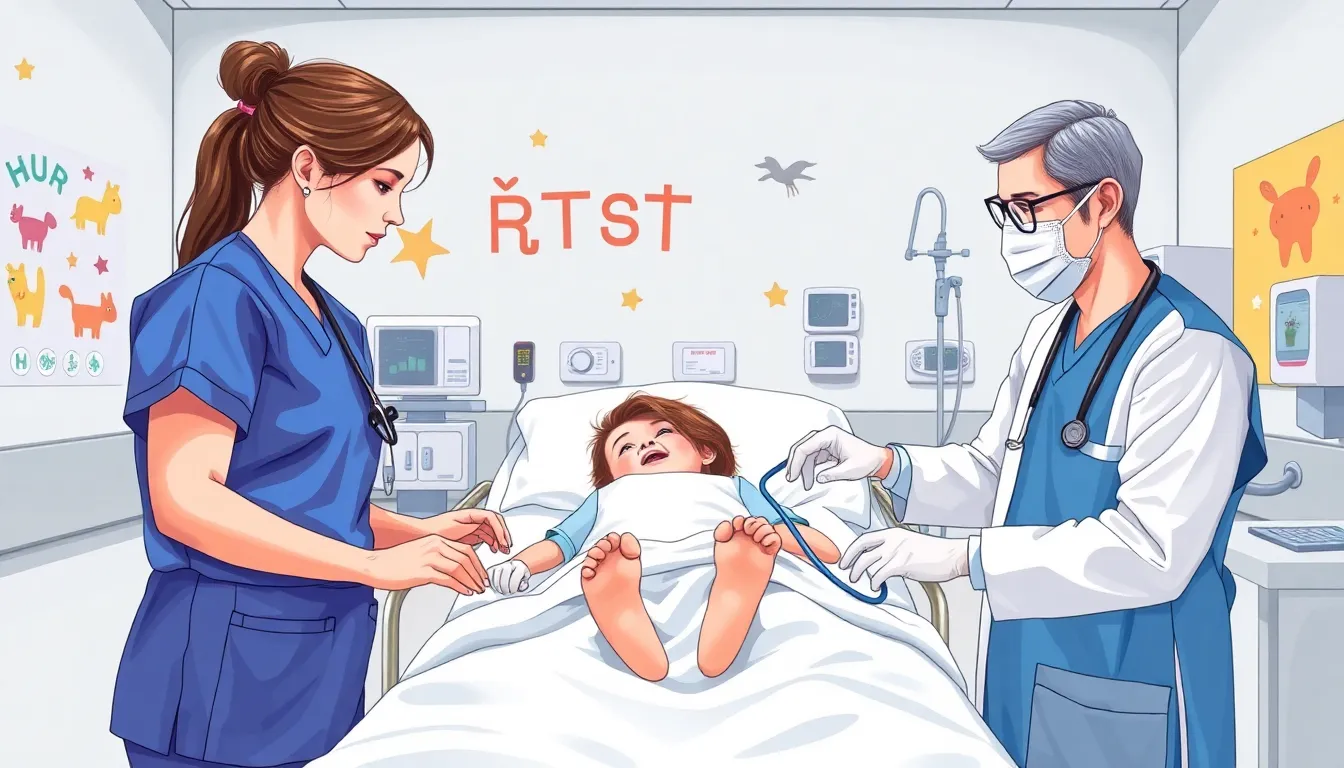In the fast-paced world of pediatric emergency care, every second counts, and a well-informed decision can make all the difference. Imagine a bustling ER where the stakes are high, and the team must juggle a million things at once—like a circus performer on roller skates. The Pediatric Emergency Care Journal is the ultimate resource for healthcare professionals navigating this thrilling yet challenging landscape.
Table of Contents
ToggleImportance Of Pediatric Emergency Care
Pediatric emergency care plays a critical role in addressing the specific health needs of children in urgent situations. Providing timely intervention can be the difference between recovery and lasting complications.
Overview Of Pediatric Emergencies
Pediatric emergencies include a wide range of conditions, from respiratory distress to traumatic injuries. Illnesses such as fever, dehydration, or severe allergic reactions often manifest differently in children compared to adults. Statistics show that approximately 30% of emergency visits involve pediatric cases, highlighting the necessity for specialized knowledge in handling these medical situations. Awareness of common pediatric emergencies helps healthcare professionals to make swift decisions, enhancing patient outcomes.
Unique Challenges In Pediatric Care
Challenges in pediatric care differ significantly from those in adult practice. Children often lack the ability to communicate their symptoms clearly, complicating diagnosis. The physiological differences between children and adults impact treatment modalities and dosages, necessitating precise calculations. Emotional considerations also play a vital role, as children can be more sensitive to illness and injury. Familiarity with these unique factors is essential for professionals delivering effective care in urgent pediatric situations.
Key Components Of A Pediatric Emergency Care Journal

A Pediatric Emergency Care Journal includes several crucial components that guide healthcare professionals in delivering effective treatment. These components ensure a comprehensive approach to managing pediatric emergencies.
Clinical Guidelines And Protocols
Clinical guidelines and protocols form the backbone of pediatric emergency care. They outline best practices for assessment and treatment, ensuring consistent and evidence-based approaches. These guidelines cover a range of topics including triage procedures, medication dosages for specific age groups, and management of common emergencies such as anaphylaxis or asthma attacks. Utilizing these protocols minimizes variability in care and enhances patient safety, especially when dealing with the unique physiological responses of children. Regular updates based on recent research help maintain their relevance in a fast-evolving medical field.
Case Studies And Research Findings
Case studies and research findings enrich the Pediatric Emergency Care Journal by providing real-world insights into pediatric emergencies. Each case study details specific scenarios, highlighting diagnostic challenges and innovative treatment solutions. Research findings often emphasize patterns observed in pediatric presentations, contributing to a deeper understanding of how children respond differently compared to adults. By integrating case studies, the journal illustrates the practical application of clinical guidelines and reinforces the importance of ongoing education in pediatric emergency care. Collectively, these elements inform better clinical decisions and improve outcomes for young patients.
Current Trends In Pediatric Emergency Care
Pediatric emergency care continually evolves to address the specific health needs of children. Staying updated with current trends is essential for optimizing patient outcomes.
Technology And Innovations
Telemedicine gains traction within pediatric emergency care, enhancing access to specialists. Mobile applications provide families with immediate advice, streamlining decision-making during crises. Artificial intelligence applications assist clinicians in diagnosing and triaging emergencies efficiently. Furthermore, electronic health records (EHR) enable seamless sharing of vital patient information, improving care coordination. Robotics are increasingly utilized in procedures, ensuring precision and minimizing invasiveness for young patients.
Roles Of Healthcare Professionals
Healthcare professionals play crucial roles in delivering pediatric emergency care. Pediatricians develop specialized knowledge that addresses children’s unique physiological needs. Emergency nurses execute rapid assessments, ensuring accurate triage and intervention in critical situations. Social workers provide emotional support for families, recognizing the psychological impact of emergencies on children. Additionally, paramedics receive specialized training to manage traumatic injuries in younger patients effectively. Collaboration among these professionals fosters integrated care, ultimately enhancing recovery outcomes for pediatric patients.
Future Directions Of Pediatric Emergency Care
Ongoing advancements in pediatric emergency care necessitate a focus on specific research areas.
Potential Areas For Research
Current gaps in pediatric emergency care research highlight numerous opportunities. Investigating effective triage protocols can improve emergency response efficiency. Additionally, studying the impact of telemedicine on pediatric care delivery offers insights for broader access. Exploring psychosocial interventions for children experiencing trauma presents avenues for enhanced support. Protocols addressing the unique physiological variations between children and adults also warrant further examination. Enhanced understanding of these areas can drive innovations in treatment approaches, fostering improved outcomes for pediatric patients.
Importance Of Ongoing Education
Ongoing education remains vital for healthcare professionals working in pediatric emergency settings. Regular training ensures staff are updated on best practices, including medication protocols and emergency response strategies. Engaging in workshops and utilizing resources such as the Pediatric Emergency Care Journal fosters skill enhancement. Additionally, staying informed about emerging technologies, such as artificial intelligence and mobile health applications, strengthens care delivery. Collaborative learning environments can further facilitate knowledge sharing among professionals, ultimately contributing to more effective pediatric emergency care.
Pediatric emergency care is an ever-evolving field that demands dedication and expertise. The Pediatric Emergency Care Journal serves as a cornerstone for professionals striving to enhance their skills and knowledge. By staying informed about the latest guidelines and innovations, healthcare providers can significantly improve the care they deliver to young patients.
As challenges continue to arise in pediatric emergencies, the importance of collaboration and ongoing education cannot be overstated. Embracing new technologies and approaches will pave the way for better outcomes. Ultimately, a commitment to excellence in pediatric emergency care ensures that children receive the best possible treatment during their most vulnerable moments.



